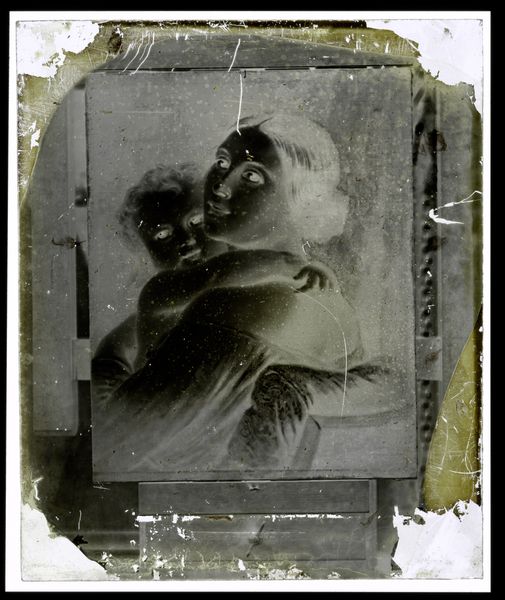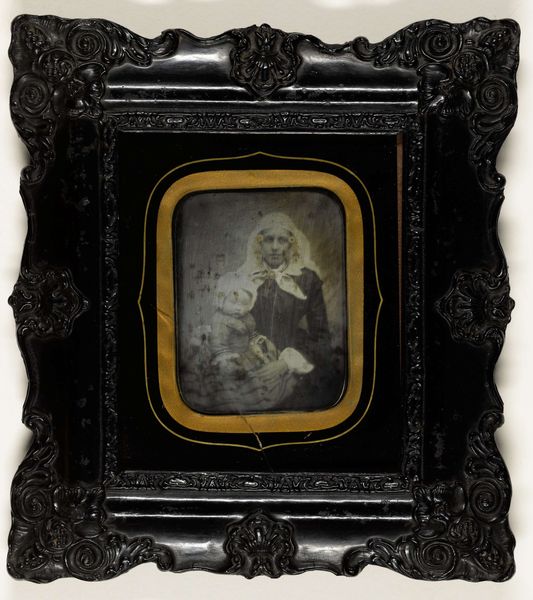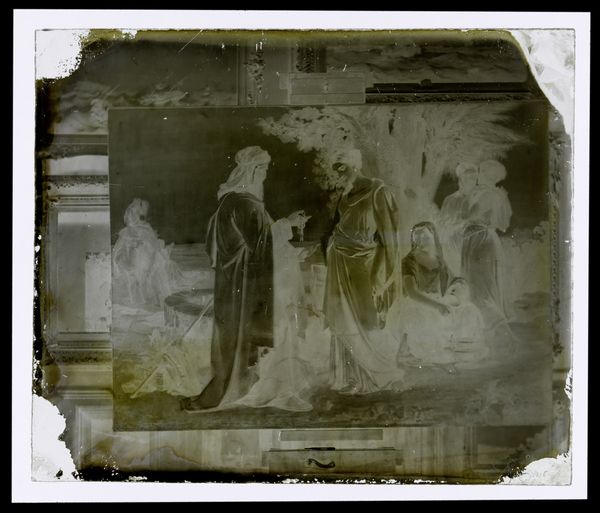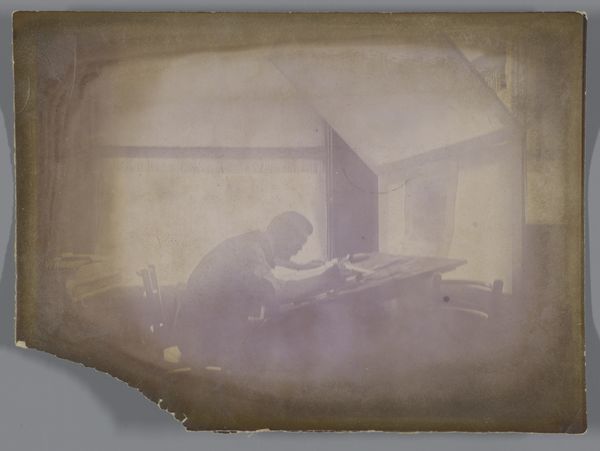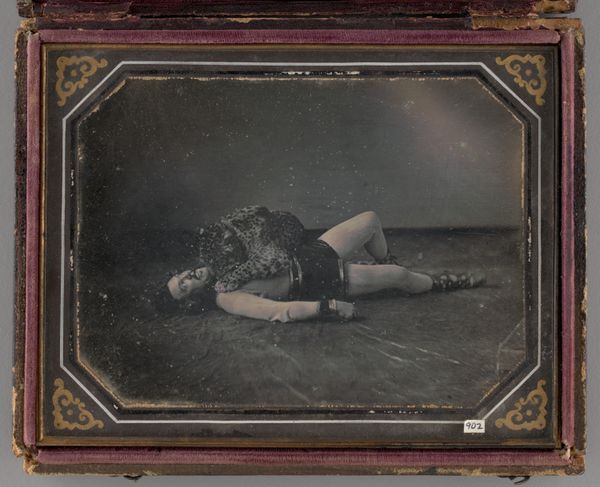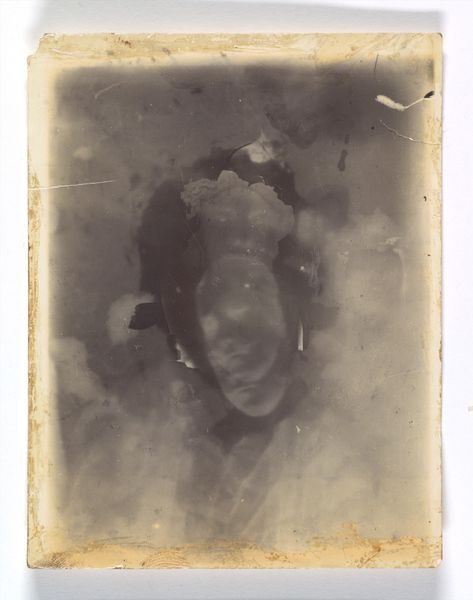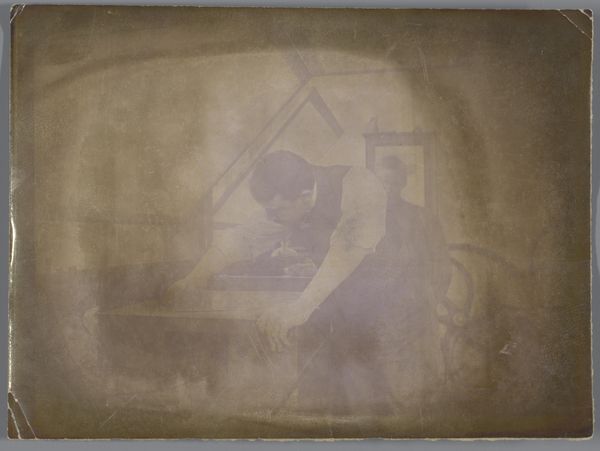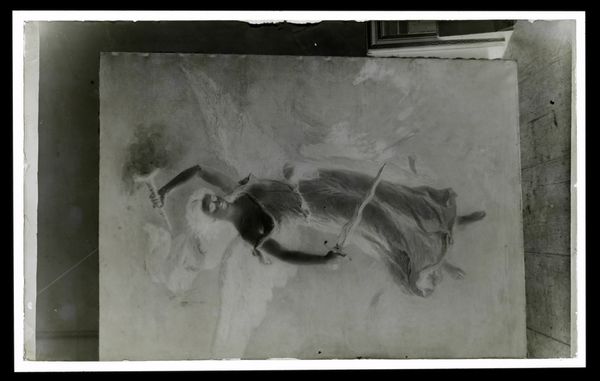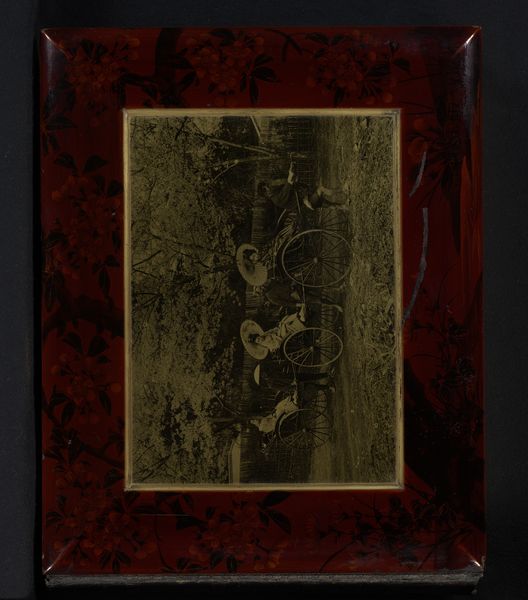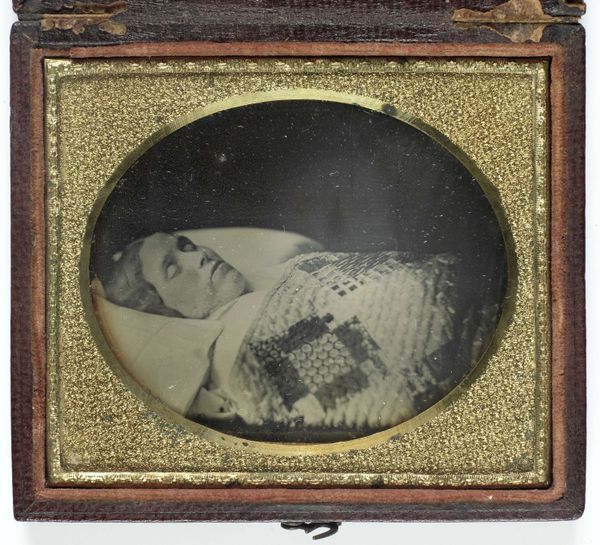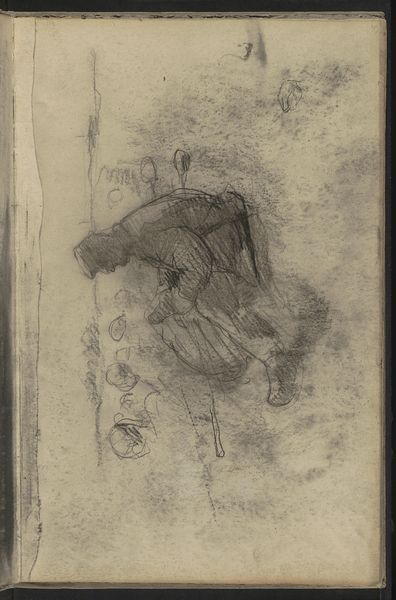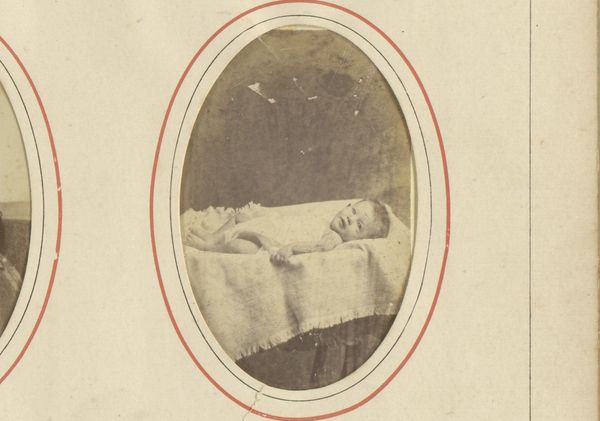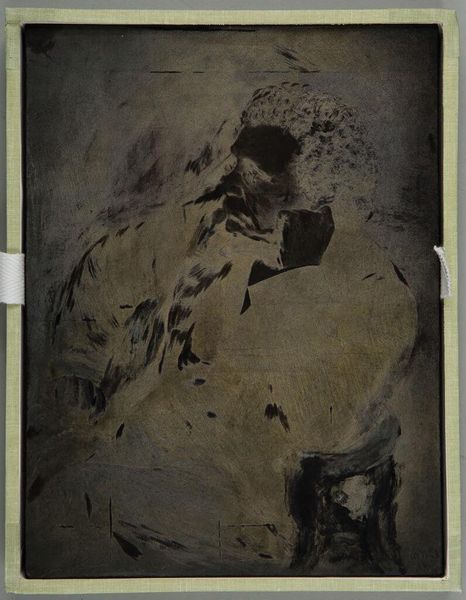
daguerreotype, photography
#
portrait
#
daguerreotype
#
photography
#
genre-painting
#
realism
Dimensions: image (visible): 7 × 5.7 cm (2 3/4 × 2 1/4 in.) mat: 8.2 × 6.9 cm (3 1/4 × 2 11/16 in.) case (closed): 9.2 × 8.3 × 1.6 cm (3 5/8 × 3 1/4 × 5/8 in.)
Copyright: National Gallery of Art: CC0 1.0
Curator: This daguerreotype, "Portrait of a Child," dates from around 1850 and its artist is unfortunately anonymous. What strikes you about this image? Editor: There's an unexpected intimacy to it, despite the formal composition. The child appears almost in a dreamlike state, with the hat covering the face, very interesting materials. The light is soft but very precise, giving an ethereal quality to the whole image. Curator: Absolutely. The process of creating daguerreotypes involved meticulously polishing a silver-plated copper sheet, treating it with chemicals to make it light-sensitive, and then exposing it in a camera. Consider the labour involved in producing this single image and how it democratized representation across classes, capturing likenesses with unprecedented realism at the time. It also, obviously, codified and solidified expectations for portraiture, not merely likenesses. Editor: Yes, and the materials themselves—the silver plate, the chemicals, the framing—speak to a growing industry built around capturing and commodifying images. Beyond the person depicted, it is capturing of processes of labor itself. The very posture of the child is revealing - it invites speculation. Why the hat covering the face? The relaxed, yet constructed setting speaks volumes. What's the nature of childhood being expressed here, or, rather, what type of idealization is suggested through those careful arrangements and objects? Curator: Exactly! I mean, it is revealing of the way childhood was both seen and fabricated. The backdrop, the clothing - all these elements carefully stage the subject within the context of emerging Victorian values and social expectations, as well as codes of social status and wealth through the material. This wasn't merely a depiction; it was a carefully constructed narrative about innocence and social placement. And, this all being considered, we are missing significant components of this construction by the portraitist being unnamed, anonymous, in effect. Editor: In this, the absence becomes very interesting to the discussion around the work. To imagine and recover the potential for human labor, while knowing its precise parameters remain unrecoverable is an enticing dialectic, one the work creates by itself and for us. I also believe it makes us reconsider the relationship between those concepts like authorial intention and the social impact and life a work ultimately gets to have. Curator: A worthwhile idea that resonates. This image prompts reflection on societal structures, labor, and identity across centuries, making this little "Portrait of a Child" remarkably profound and relevant. Editor: Agreed, seeing this has made me realize anew the deep entanglement of aesthetics, ideology, and our social environment.
Comments
No comments
Be the first to comment and join the conversation on the ultimate creative platform.
